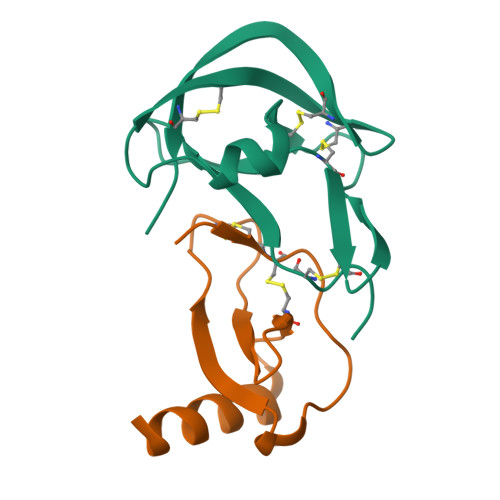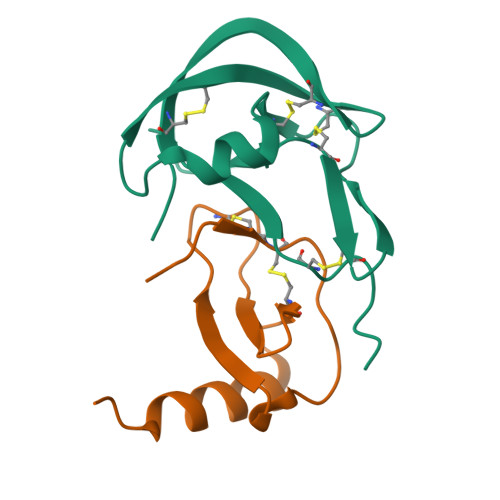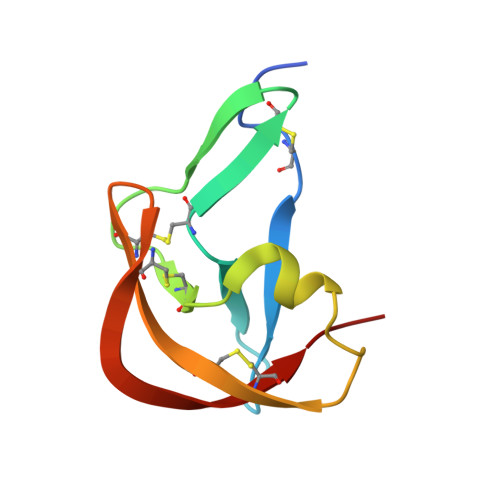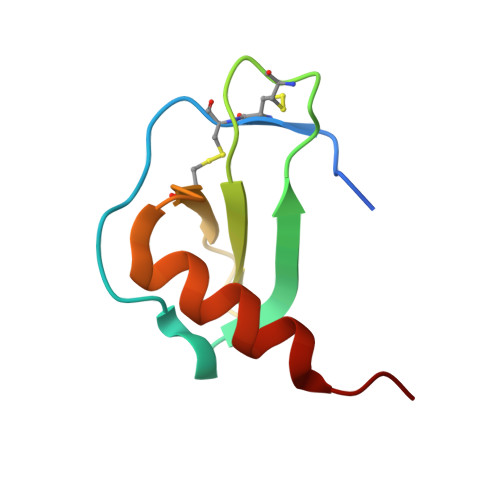Structure-guided engineering of tick evasins for targeting chemokines in inflammatory diseases.
Bhusal, R.P., Aryal, P., Devkota, S.R., Pokhrel, R., Gunzburg, M.J., Foster, S.R., Lim, H.D., Payne, R.J., Wilce, M.C.J., Stone, M.J.(2022) Proc Natl Acad Sci U S A 119
- PubMed: 35217625
- DOI: https://doi.org/10.1073/pnas.2122105119
- Primary Citation of Related Structures:
7S4N, 7S58, 7S59, 7S5A, 7SO0 - PubMed Abstract:
As natural chemokine inhibitors, evasin proteins produced in tick saliva are potential therapeutic agents for numerous inflammatory diseases. Engineering evasins to block the desired chemokines and avoid off-target side effects requires structural understanding of their target selectivity. Structures of the class A evasin EVA-P974 bound to human CC chemokine ligands 7 and 17 (CCL7 and CCL17) and to a CCL8-CCL7 chimera reveal that the specificity of class A evasins for chemokines of the CC subfamily is defined by conserved, rigid backbone-backbone interactions, whereas the preference for a subset of CC chemokines is controlled by side-chain interactions at four hotspots in flexible structural elements. Hotspot mutations alter target preference, enabling inhibition of selected chemokines. The structure of an engineered EVA-P974 bound to CCL2 reveals an underlying molecular mechanism of EVA-P974 target preference. These results provide a structure-based framework for engineering evasins as targeted antiinflammatory therapeutics.
Organizational Affiliation:
Monash Biomedicine Discovery Institute, Monash University, Clayton, VIC 3800, Australia; ram.bhusal@monash.edu martin.stone@monash.edu.


















